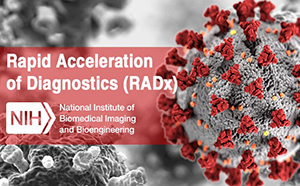Generative AI is no longer a novelty, it is a necessity. For healthcare leaders, the conversation has evolved beyond proof of concept. The real challenge now is integration: incorporating these models into clinical workflows in a secure, scalable, and operationally robust manner. Success requires more than impressive results. It requires systems built for the complexity of healthcare, with the agility to support front-line decisions and the clarity to preserve human judgment at the center of care.
For most people, AI begins and ends with chat. Whether ChatGPT or a hospital support bot, the pattern is familiar: ask a question and get an answer. It’s intuitive, but it’s not enough for healthcare. Clinical environments are inundated with complex, high-risk data, much of it unstructured and constantly evolving. Single prompts can’t keep up. What needs medical attention is AI agent: systems that not only respond, but observe, synthesize and act proactively. These models operate quietly in the background, analyzing records, uncovering insights, and resolving nuanced clinical questions—without waiting to be asked. That is the step from interaction to intelligence.
Context is king: why information flow influences model performance
Even the most advanced AI models need guidance, and that guidance comes from context. In healthcare, the context is anything but simple. It’s not just about what data you provide, but how, when and in what form. Clinical systems generate large volumes of information: vital signs, free text notes, repeated inputs, and noise layers. The answer to a critical question may be buried somewhere in that mix, but without clear direction, the model won’t find it. To deliver meaningful results, AI must be designed to navigate complexity, knowing not only what to analyze, but also where to look and why it matters.
The real challenge is knowing what information to send to the model and when. A single medical record often contains more data than a model can process at once, and most of it will not be relevant to the question at hand. What matters for one task may not make sense, or even be misleading, for another. Therefore, good performance requires an understanding of clinical intent. A patient note may seem like a list of facts, but it is also a narrative. If you don’t get the right part of that narrative, the answer might be technically correct, but clinically useless.
True intelligence is the ability to use tools
There was a time when building AI meant writing rules: if this, then that. We then move on to training models to find patterns. Now, the next step is to give them those models. tools and let them decide how to use them. For example, a model might need to retrieve structured medication data from a database or scan a PDF discharge summary before answering a clinical question. Each of these tools—retrieval, analysis, and cross-referencing—helps the model go beyond language and solve more complex problems with greater precision.
This change completely changes the role of a model. Instead of simply answering questions, the model can reason about as to answer them. For example, we could feed the model a clinical note and ask if a patient received a certain medication. The model could read the note and conclude that it lacks enough information. Instead of guessing, you can now search: consult a medication registry, check a database, or compare lab results. The key is that you decide.
This orchestration is especially important in clinical data abstraction workflows, where responses often depend on multiple sources and subtle context. You need components that can analyze documents, retrieve data, validate results, and move information between steps. A model that uses tools is more adaptable. Rigid systems can break in the face of variability. Systems that use tools can be flexible, recover what they need, and return more accurate and durable results in all use cases.
Writing Love Letters to AI: The Art and Science of Quick Tuning
The way a question is asked affects how accurately the model answers. Getting it right has less to do with writing style and more to do with engineering: testing, refining, and tweaking the language to find what works in each scenario.
Think of it like writing a love letter, they are personal. Its structure, tone, and even length depend on who you are, what you want to convey, and who is on the receiving end. Quick layout works the same way. You are crafting language not only to share information, but also to guide behavior. Some tasks require logic; others require interpretation. As models evolve, the same message may function differently between updates, requiring ongoing adjustments and maintenance. Producing consistent results means understanding how language drives behavior in systems built to mimic the way we think.
Lessons from expanding AI integration
Scaling any generative AI model brings new challenges. Performance, latency and cost are all obvious. In the healthcare sector, the biggest concern is trust. When a model returns an answer, doctors want to know where it comes from, if it is accurate, and how reliable the system is. Studies suggest That confidence increases when results are explainable, when models are transparent about uncertainty, and when systems adapt to local data and workflows. Without that trust, even the most accurate models can struggle to gain traction in real-world attention.
The most secure clinical-grade systems have guardrails: workflows that link model results to evidence, citations, and an audit trail. This is Hybrid intelligence: a deliberate division of labor between machine and expert. The model is the engine and it moves fast. But the human still holds the steering wheel, making sure it points in the right direction.
Shaping the future of applied intelligence
Intelligence does not come only from the model. It comes from the system around it: the tools, workflows, people, and decisions that guide how and when the model is used.
Implementing AI in healthcare is not just a technical challenge, it is a real-world imperative. Success requires systems that can extract, structure and validate data at scale, while incorporating security measures that keep clinicians in control. But technology alone is not enough. What is needed are solutions that span the full spectrum of clinical, technical and operational complexity and that adapt to the demands of daily patient care.
About Andrew Crowder
Andrew Crowder leads the engineering team health letter. Andrew is a results-driven software engineering executive and AI innovation leader. Andrew drives the integration of cutting-edge AI into impactful healthcare solutions. Its focus on “applied AI” delivers tangible efficiency gains in medical data analysis. Champion the transformative power of thoughtful technology in healthcare, always prioritizing user experience and improved workflow.



